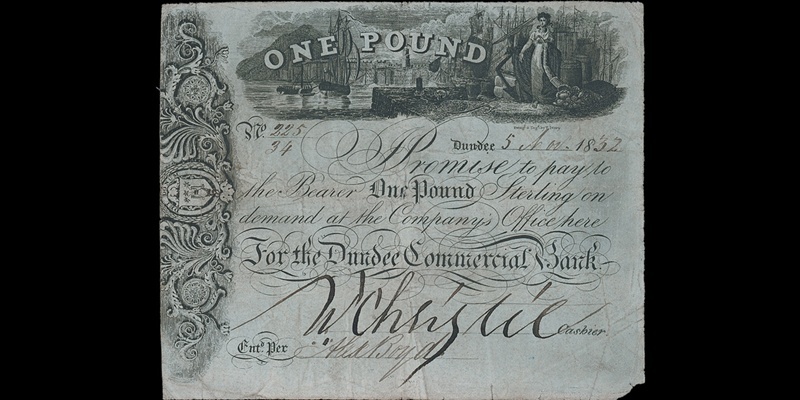A rare one pound note, produced 180 years ago when Dundee printed its own money, could fetch £500 at an auction even though it might be a fake.
The elaborate black and white Dundee Commercial Bank note, featuring an engraving of Dundee harbour, is dated November 5, 1832, and according to auctioneer Spink it is ”possibly a forgery” produced in or around that date.
Spink describes the note as ”rare” and, despite its age, it is in what they call ”about fine” condition. It is expected to sell for between £400 and £500 at Spink in Bloomsbury, London, on Monday.
Three ”scarce” forged 1824-1825 Dundee Banking Company one pound notes will be sold together in the one lot at the same auction and are expected to sell for £200-£300.
The Dundee fakes are among 300 Scottish banknotes, including several rare and historically important notes, that were collected over a lifetime by retired Edinburgh-based bank worker Alasdair Macdonald, and which could fetch over £100,000 at the Spink sale.
Forged Scottish banknotes tend to be more valuable than English forgeries because ”generally they tend to be older,” according to Barnaby Faull, head of the banknotes department at Spink.
Mr Faull said: ”They are popular because they are old and historically interesting.”
Many forged Scottish notes were produced in the early 1800s by resourceful Napoleonic prisoners of war based in Scotland. Nowadays they can now usually be identified as fakes by the inferior quality of paper.
There were two Dundee Commercial Banks. Both were short-lived, which means the notes they produced are comparatively rare.
The first opened in 1799 and closed in 1802. The second opened in 1825 and merged 13 years later with the newly-formed Eastern Bank of Scotland, which had its head office at the old Trades Hall in Dundee.
The Dundee Banking Company, owned by George Dempster and Company, opened in 1763 and flourished for more than a century. In 1864, it became part of the Royal Bank of Scotland.
Also coming up for sale at Spink on Monday is an 1850s Perth Banking Company five pound note, which is not a forgery. It is a proof, so it was never issued.
It is emblazoned with the words ”The Perth Bank” and features engravings of Queen Victoria and Prince Albert on horseback. It is expected to fetch £300-£500.
